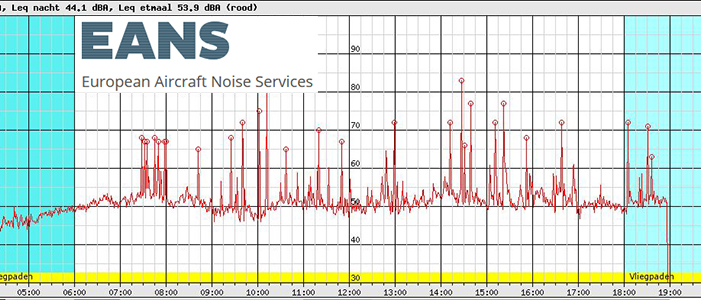Millions of people in Europe live in areas with too much noise according to the new World Health Organization (WHO) guidelines. Environmental noise is an important public health issue, featuring among the top environmental risks to health. It has negative impacts on human health and well-being and is a growing concern among both the general public and policy-makers in Europe. This is stated in the WHO’s new Noise Guidelines for the European Region. Here we concentrate on aircraft.
For average noise exposure, the Guideline Development Group (GDG) of the WHO strongly recommends reducing noise levels produced by aircraft below 45 dB Lden, as aircraft noise above this level is associated with adverse health effects.
For night noise exposure, the GDG strongly recommends reducing noise levels produced by aircraft during night time below 40 dB Lnight, as aircraft noise above this level is associated with adverse effects on sleep.
To reduce health effects, the GDG strongly recommends that policy-makers implement suitable measures to reduce noise exposure from aircraft in the population exposed to levels above the guideline values for average and night noise exposure. For specific interventions the GDG recommends implementing suitable changes in infrastructure.
For more specific information read the full report, about aircraft from page 61. An Executive summary is available in English, French, German and Russian.
(Citizens science about noise measurement: eans.net)







